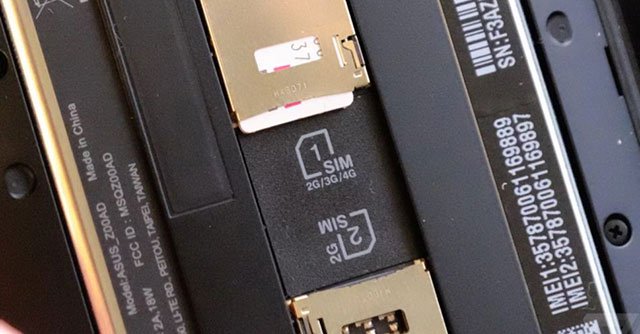SIM cards will soon be attached to microprocessors to save space
Each millimeter is also important when you build electronic devices that are increasingly complex and increasingly compact. Relatively large space of SIM cards has long been a headache for hardware manufacturers. Recently, ARM chip manufacturer had the answer, an integrated component named iSIM Attached directly to the chip as microprocessor.
ARM says iSIM will occupy 'part of a square millimeter' while the current standard SIM - Nano SIM - measures about 12.3 x 8.8 mm, not to mention the hardware used to store them on the device. suffered. According to ARM, this SIM not only saves space but more importantly reduces costs. Instead of paying '10 cents' for each card, the manufacturer will only have to pay a 1-digit coin.
But don't assume that the SIM card will disappear. The above technology was developed with the original goal of IoT devices, like wireless sensors that need mobile services to report what it detects. The purpose of ARM is to reduce the cost of these products to the lowest possible level, so that their chip designs become more popular in the IoT market that will flourish in the coming years.

ARM's design takes the SIM directly into the device's processor
This raises an important question as to whether or not mobile network providers approve. Phone makers now have a solution to replace Nano SIM - a small 6 x 5 mm chip called eSIM - but the level of adoption in the industry is still very slow. Even so, eSIM is increasingly appearing on many recent tablets and wearable devices on Google's latest Pixel phones. Perhaps it will only be a matter of time before this technology is more widely used.
ARM hopes that iSIM will be responsive to carriers because of its ability to meet the necessary standards and ultimately they themselves want to see the network-connected IoT devices they offer, because that means they get more customers.
ARM said it has sent iSIM's design to its partners and hopes to see these chips appear later this year.
See more:
- Embed Sim (eSIM) will be the new trend in the future?
- Learn about eSIM new SIM technology for the future
- Nvidia: Moore's Law is dead, the GPU will soon replace the CPU
You should read it
- To activate eSIM on the phone
- Viettel is the first and only network operator in Vietnam to support eSIM according to Apple standards
- Viettel will provide eSIM on smart watch
- Does Google Pixel 2 need no ordinary physical SIM?
- Samsung will integrate eSIM technology on Galaxy S20 Ultra
- Basic guide to Nano editor
 It's unbelievable: She turned the electric car into the world's largest computer mouse, hovering over where she drove herself.
It's unbelievable: She turned the electric car into the world's largest computer mouse, hovering over where she drove herself. Samsung started manufacturing Aquabolt: 2.4G Gb DRM speed 8GB 2.4Mb / sec
Samsung started manufacturing Aquabolt: 2.4G Gb DRM speed 8GB 2.4Mb / sec Intel teamed up with Ferrari to launch an integrated AI unmanned aircraft to analyze car races
Intel teamed up with Ferrari to launch an integrated AI unmanned aircraft to analyze car races Apple releases videos that guide users to make the most of the benefits of the iPhone camera
Apple releases videos that guide users to make the most of the benefits of the iPhone camera How does CEO Intel try to reassure investors about security flaws?
How does CEO Intel try to reassure investors about security flaws? Qualcomm introduces a smart sound platform with Cortana promising to explode
Qualcomm introduces a smart sound platform with Cortana promising to explode